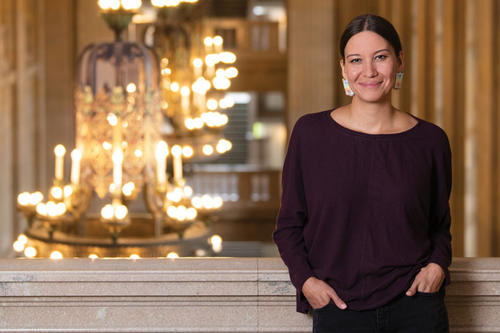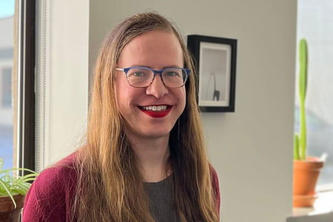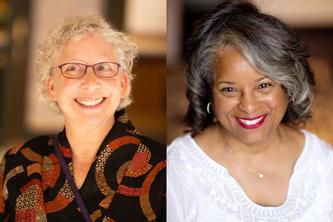
In her time as University of Minnesota president, Joan Gabel has made an extra effort to acknowledge that the campus was built on the traditional homelands of the Dakota people. Unfortunately, Native American students have long been underrepresented in higher education, including at the U of M. Doctoral student Megan Red Shirt-Shaw is working to change that.
Red Shirt-Shaw is an Oglala Lakota student in organizational leadership, policy, and development in the College of Education and Human Development (CEHD). “My Lakota identity has an incredible influence on me,” she says. When she was considering the U of M for its top-ranked higher education leadership program, a conversation with another Native student was encouraging.
Once she visited campus, she was excited by her potential cohort and all of their research interests, as well as a strong Native population in Minneapolis and the U of M’s vibrant Department of American Indian Studies.
Red Shirt-Shaw knows the importance of feeling visible, and says that it’s important for Native students to be able to look around and see others like them. “I want everyone to know we still exist, we still have powerful language and culture, and we still matter.”
She is interested in what inspires Native students to push through systems that were not set up for them, with a focus on identity development and how to ease the transition from high school to college. Her long-term goal is to create, along with her husband John Little (’20 PhD, history), a college prep and access program for Native students in South Dakota. “I want to give back what the community needs,” she says.
And as 2020 has played out, she’s learned even more about the importance of community—in multiple senses of the word.
“We learn in the classroom and we’re empowered by that knowledge, but we’re always going to be met with situations where we don’t have the answers, Red Shirt-Shaw says. “It’s been really nice to be in community with people that I got to connect with at Minnesota. Just being able to reach out and say, ‘This is something that we’re all experiencing together, [so] how are we supporting students virtually? How do we come together as a collective and empower each other to continue to do this work?’
“At the end of the day our system has now changed forever,” she adds. “I think the power of being in education is being able to adapt. And that’s so central to being a Native person. Indigenous people have always adapted to the situations that were presented to us, and we’ll continue to do that as long as it’s for the benefit of our students and what’s best for our communities.”
- Categories:
- Education
- American Indian





